- News
- Reviews
- Bikes
- Accessories
- Accessories - misc
- Computer mounts
- Bags
- Bar ends
- Bike bags & cases
- Bottle cages
- Bottles
- Cameras
- Car racks
- Child seats
- Computers
- Glasses
- GPS units
- Helmets
- Lights - front
- Lights - rear
- Lights - sets
- Locks
- Mirrors
- Mudguards
- Racks
- Pumps & CO2 inflators
- Puncture kits
- Reflectives
- Smart watches
- Stands and racks
- Trailers
- Clothing
- Components
- Bar tape & grips
- Bottom brackets
- Brake & gear cables
- Brake & STI levers
- Brake pads & spares
- Brakes
- Cassettes & freewheels
- Chains
- Chainsets & chainrings
- Derailleurs - front
- Derailleurs - rear
- Forks
- Gear levers & shifters
- Groupsets
- Handlebars & extensions
- Headsets
- Hubs
- Inner tubes
- Pedals
- Quick releases & skewers
- Saddles
- Seatposts
- Stems
- Wheels
- Tyres
- Health, fitness and nutrition
- Tools and workshop
- Miscellaneous
- Buyers Guides
- Features
- Forum
- Recommends
- Podcast
feature
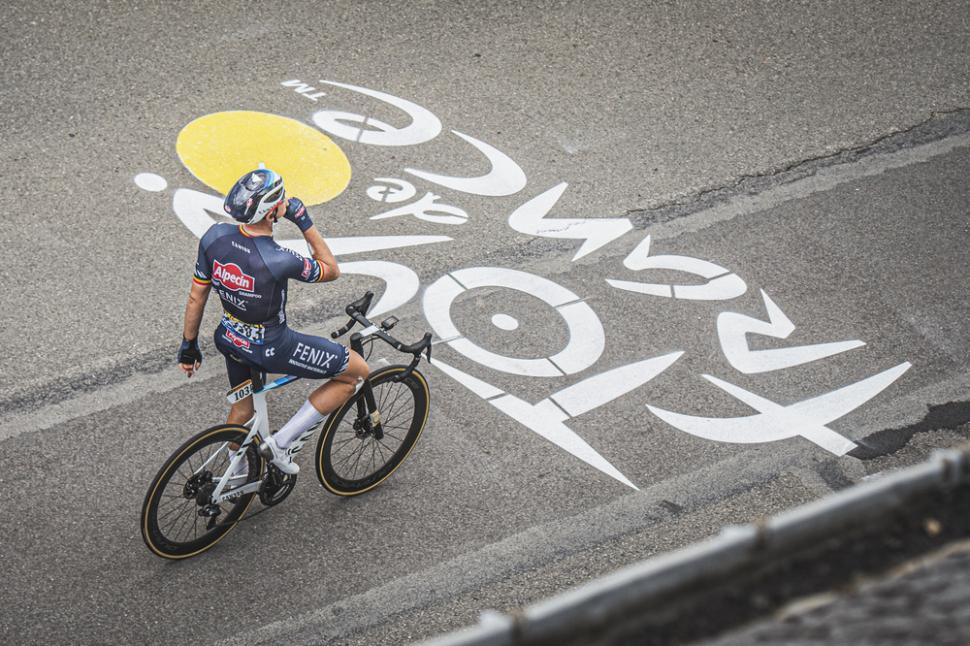 Tim Merlier wins Stage 3 of the 2021 Tour de France (picture credit A.S.O._Charly_Lopez)
Tim Merlier wins Stage 3 of the 2021 Tour de France (picture credit A.S.O._Charly_Lopez)What's going on at the Tour De France? The races within the race explained
Watching a bike race like the Tour de France can be utterly confusing at times. There are multiple competitions running within one race, and that leads to some situations that seem baffling if you were expecting a simple first-to-the-finish-line race for the yellow jersey.
We’ve broken the Tour de France down into some of the different competitions and race aims that a team or individual might have, and we’ll take a look at the tactics that you'll want to look out for as the race makes its way around France.
Breakaways
We’ll start with the most simplistic of the tactical choices within the Tour de France - it is of course the humble breakaway, where a group of riders, or sometimes even an individual rider, will break off from the peloton in a bid to claim a stage victory. Why do breakaways happen? Well, there’s always a chance that the break could win, but the main reason is that sponsors would love their logo to be on French national TV for five to six hours.
Sponsors put a lot of money into cycling teams, and they are often enticed by the promise of daily coverage in Tour de France breakaways. This is most often the case for second-tier French teams such as Arkea, TotalEnergies and B&B Hotels. Expect to see at least one representative from each team in every larger break, as this is often the main goal of their Tour.
Breakaways can also be infiltrated by teammates of general classification (GC, the competition for the yellow jersey) leaders, green jersey hopefuls, and climbers looking for KoM (King of the Mountain, or polka-dot jersey) points. That’s a whole new world, so we’ll analyse that within each competition.
Some riders that start the race with GC hopes might crash in the first week. If they lose a good chunk of time, they might then lose more on purpose to both save energy and also ensure that they're absolutely no threat in the GC. They can then head off into the breakaway on the high mountain days in search of a stage win.
There are some riders that make a career out of being breakaway specialists, such as Thomas de Gendt, Steve Cummings and Jens Voigt. These riders will target specific stages, often in the second week, that aren’t overly hard, but hard enough that it’s too tiring for the peloton to control.
They often fail in their quest for a win but will gain the adoration of fans, and that positive attention is something that sponsors love. Cycling, after all, is a very human sport.
Tactics to look for:
- French teams in every break
- The winner coming from the break in the second week
- A mix of objectives making up a break
GC Teams
The race for the GC and the yellow jersey you get for winning it is the tensest of all. You have to be on the ball every day, and you’ll need a fantastic set of teammates to get you through sprints, wind, rain, crashes and everything else to be in a strong position on the all-important mountain stages. Here, you can use the world-class abilities that you’ve trained all year to distance yourself from your rivals.
Not losing time is the name of the game, and those teammates are the ones that are going to ensure that you don’t. Tactically, the simple and most visible demonstration of this can be seen in the opening stages, where we saw the teammates of GC hopefuls such as Primoz Roglic (Jumbo-Visma) and Geraint Thomas (Ineos Grenadiers) riding right up at the front of the peloton for the entirety of each stage. This is in an attempt to avoid the huge crashes that characterise the opening week of the Tour de France, but it doesn’t always work. Roglic and Thomas have both hit the deck hard already in this year’s race.
> How do Tour de France riders eat on the go?
Once we’re through the opening week’s carnage, the breakaway riders begin to smell the chance of a large group staying clear of the bunch all the way to the line. The sprinters might deem the stage too difficult for them to make the finish, the faster non-sprinters might not have enough teammates left to chase down the escapees and, as long as no overall contenders go up the road, the GC teams won’t bother expending the energy to chase down the break.
It is in the early stages that the GC team tactics play out. A good road captain - Luke Rowe of Ineos is a brilliant example - will keep an eye on which riders are trying to go in the breakaway, and decide if the constitution of the escape is acceptable. If the best-placed rider is around 20 minutes down on GC, Rowe won't be bothered as there’s no threat to his leader’s GC hopes. Should a threatening rider who is only a few minutes down and could go well in the higher mountains get into the move, then Rowe would be forced into chasing the break with a few other Ineos teammates.
As we get into the high mountains, GC teams can deploy their riders tactically in two main ways: the first is the controlling tactic that we’ve become so used to seeing with the Ineos/Sky team. The basic aim here is to set a pace that is strong enough to deter any of the other GC team leaders from attacking. While mightily impressive and very effective, it is a bit dull.
The other, and better option for entertaining racing, is for a GC leader to send a few teammates up the road in the early breakaway. The GC leader hangs tight in the peloton for the first part of the stage. Hark your mind back to Andy Schleck’s big attack on stage 18 in 2011 and you’ll remember (you might not, here's a video if you're not familiar) that he attacked on the penultimate climb, the Col d'Izoard, and bridging up to a teammate on the following descent.
> Why does having a strong team on a Tour de France mountain stage matter - what do teammates do and what if a rider doesn’t have any
He then used this teammate to shelter him from the headwind - sitting behind another rider saves roughly 30% - in the valley before going on alone up the monstrous Col du Galibier.
Had Schleck not had that teammate to help him, he would have been working far harder on the flat valley section before the final climb. Having the teammate up the road and ready to help is key to ensuring the GC rider, in this case, Schleck, save their energy for when he really needed it, on the Galibier climb.
Tactics to look for:
- GC riders at the front on sprint stages
- Yellow jersey team controlling in the mountains
- GC rivals sending teammates into the break when they want to attack
The white (young rider's) jersey
Any rider under the age of 25 is considered a young rider in the Tour de France and there is a competition just for the kids. This is traditionally a competition that is won by an up and coming GC rider, but the rise of the likes of Pogacar and Bernal means that the white jersey has been taken by the winner of yellow for the past two years.
With Pogacar still just 22, he might be collecting the white jersey by default for the next few years. Traditionally, we'd tell you to look out for the white jersey clinging to the leader's group in the high mountains. But these days, the white jersey is most likely to be found attacking and winning.
The green (sprinter's) jersey
While the name suggests that the best sprinter in the race will win the green jersey, the rider that takes green in Paris is often not actually the best sprinter, but a rider that can just about hold their own in the properly fast finishes, but then also get themselves over the mountains in the breakaway to take intermediate sprint points in the second and third weeks.
Thankfully sometimes the best sprinters do win green, such as Sam Bennett of Deceuninck–Quick-Step last year. He even won the final Tour de France stage on the Champs-Élysées, often considered the sprinters’ World Championships, while wearing the green jersey - Mark Cavendish has also done this in the past when he was in his prime, and it's just about as good as it gets for a sprinter.
In terms of tactics, the intermediate sprint points become very important for those riders that are going for green. This sprint generally comes in the final third of a stage, and those riders that are going for the green jersey will get a few of their teammates to get on the front and wind up the pace to give them a leadout.
> Psssssst! What happens when a rider punctures in the Tour de France?
Ideally the green jersey hopeful will win this little sprint, and pick up the maximum points available after the breakaway has been through first.
It’s bad news for the breakaway, as the speed that this half-hearted leadout generates is enough to knock around 30-40 seconds from their lead; and that’s assuming that the break has even made it this far. Sometimes, if a green jersey hopeful needs to take loads of points, they may get their team to bring the breakaway back. This would be even better if, in doing so, they dropped the green jersey hopeful’s main rival. This would give them the biggest gain possible.
Watch out for Peter Sagan’s Bora Hansgrohe team getting him into numerous breakaways in the mountains - they’re just in it for the green jersey points.
Tactics to look for:
- The green jersey going to a rider that is consistent, not the absolute fastest
- The break being brought back before the intermediate sprint
- The green jersey hopeful contesting the intermediate sprint with more effort than the sprinters looking to win the stage
The polka-dot (climber's) jersey
Unlike the race for the green jersey, the polka-dot jersey - or King of the Mountains competition - is won by picking up points for being the first rider over the classified climbs on each stage. The points range from a lowly one point on a fourth category climb, right up to 20 on HC (Hors catégorie, the most difficult) climbs. As a result, the competition is weighted heavily in favour of riders that can collect points on stages with several category 1 and HC climbs littering the route.
That isn’t the full story, however. You’ll often see riders battling furiously for a single KoM point on the opening (traditionally flat) stage, as this single point will put them in the jersey for the next day. Battling for the polka dot jersey in the opening week is a tiring task, involving many kilometres spent in the breakaway, often for a small return in terms of points. As a result, we don’t often see the rider that holds the polka dot jersey in the opening week going on to wear it in Paris.
> The unwritten rules of the Tour de France - what are they and how are they enforced
Instead, the riders that are seriously targeting the jersey - generally skinny climbing specialists - will spend the first week of the race intentionally or unintentionally losing time in the general classification. This is so that when they want to go in the breakaway on a mountain stage later in the race, the GC leader in the yellow jersey won’t see them as a threat to their lead. Currently doing a good job of losing a bit of time each day is Simon Yates of Team BikeExchange - watch out for him on the big mountain days.
Tactics to look for:
- A huge fight on the first stages for a very small number of KoM points
- Climbers heading into the break on big mountain days in search of points
Team Classification
Movistar is the only team that cares, move on!
No, in all seriousness, the team competition is a tricky one to win. The classification is decided on the cumulative times of your team’s three best-placed riders. Teams that take three decent GC riders to the Tour are in with a very good chance of winning this competition and that’s why Movistar - who often turn up with a three-pronged attack - have won the team prize in the last several editions.
Tactically, this means that you might find riders fighting for an otherwise unremarkable 28th position on GC, but unless you’re paying particular attention to the team’s classification, you’ll often learn about the winner when they step onto the final podium in Paris.
If you’re just getting into cycling and watch other team sports, it might seem like a weird concept that in a sport where the winner relies so heavily on their team, the team competition is both a separate competition and also a bit of a sideshow. Look out for the yellow race numbers - that’s how you can tell which team is winning the race that no one is watching!
Tactics to look for:
- Riders that are dropped from the front of the race fighting all the way to the line
The tactics that this creates
With all of this going on, it’s no wonder that the tactics can get a bit confusing at times. There are often riders vying for different competitions that will work together on a stage so that they both achieve their goals. For instance, a rider that wants the sprint points might ride with a rider that wants the KoM points. Cycling is a funny sport, where favours get asked for and friends are remembered...
> Get to grips with the new UCI rules: changes to look out for in this year’s Tour de France
Those are the basic tactics that you'll be seeing as we move through the Tour de France. Got a question about the tactics in the race? Leave them below and we'll do our best to provide and clear and concise answer. If you've got some insight that you feel would be helpful to a new TDF fan, leave that in the comments too.
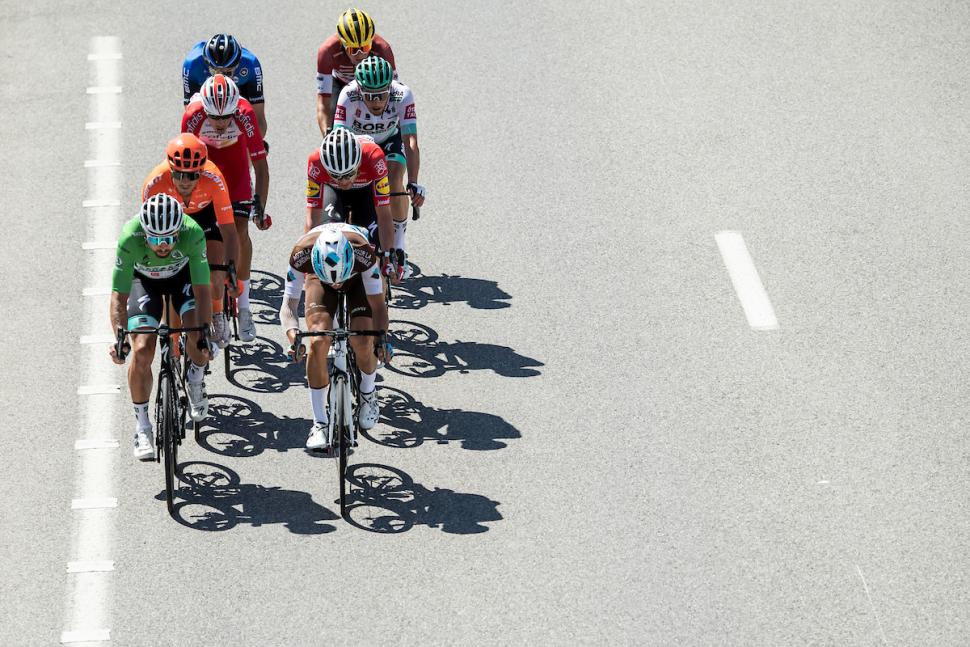
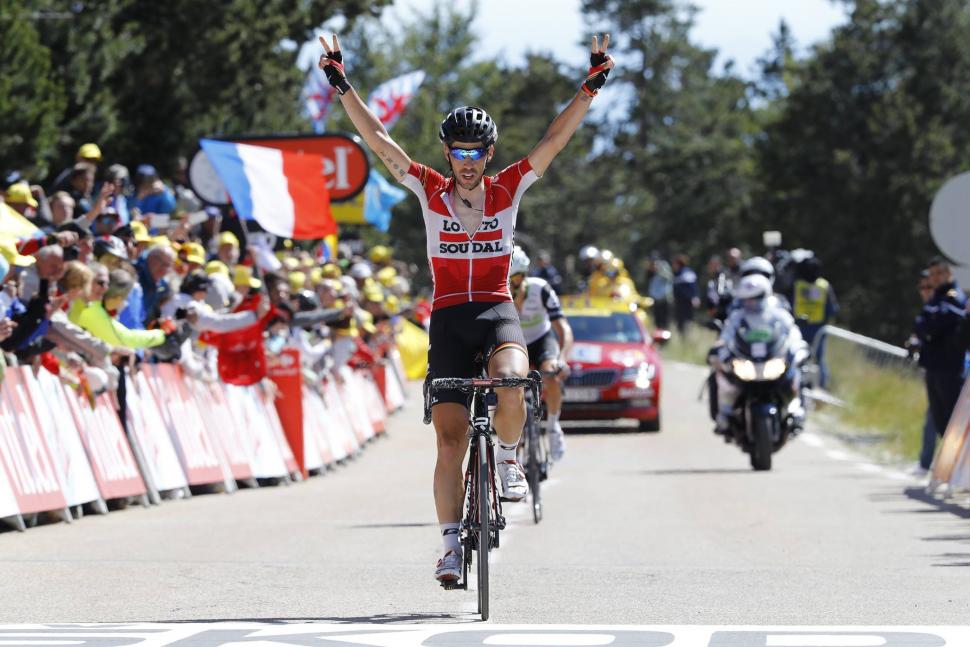

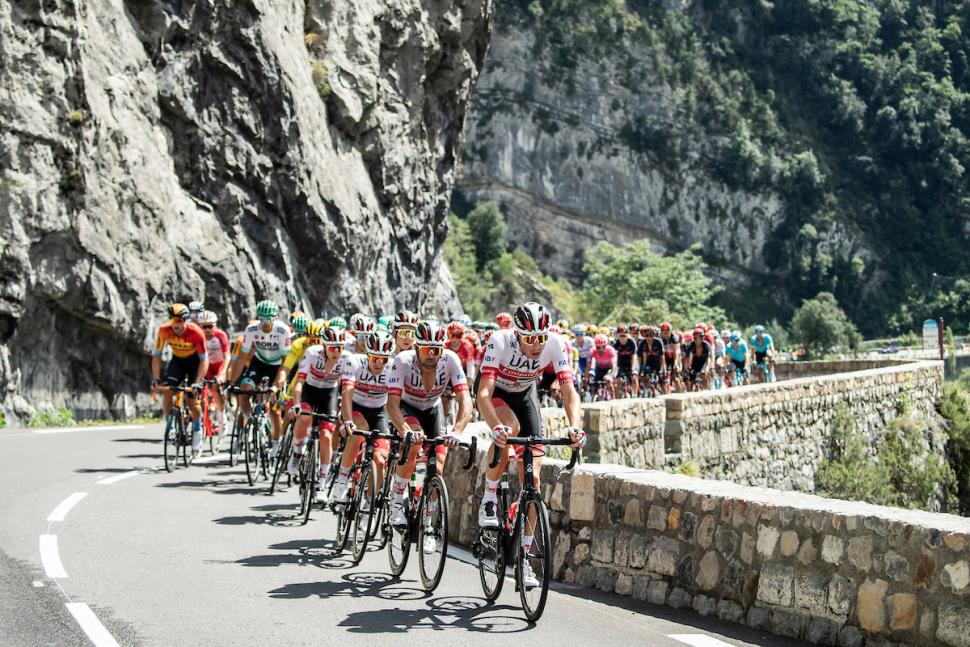
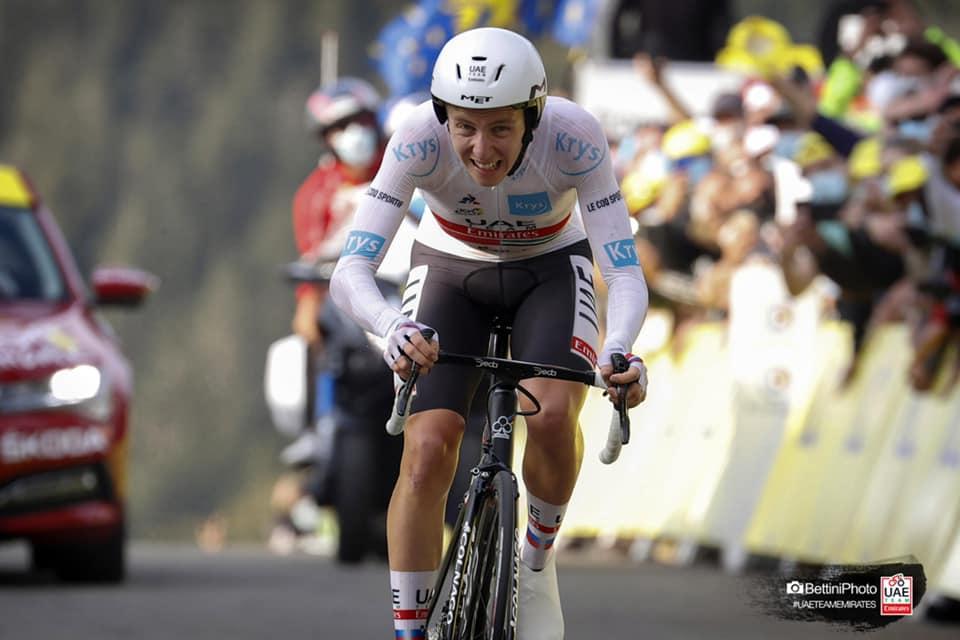
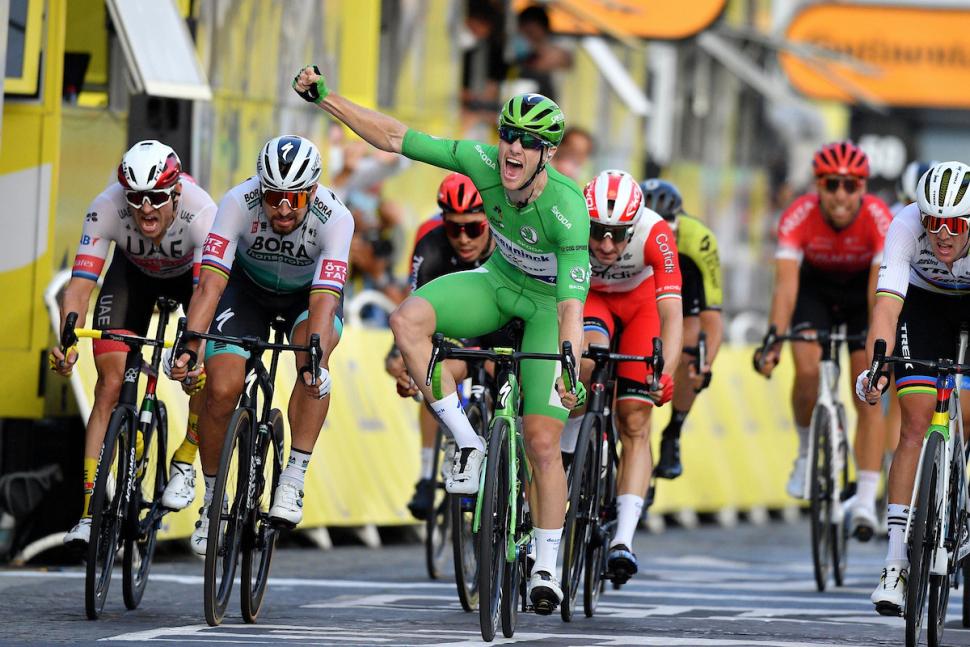
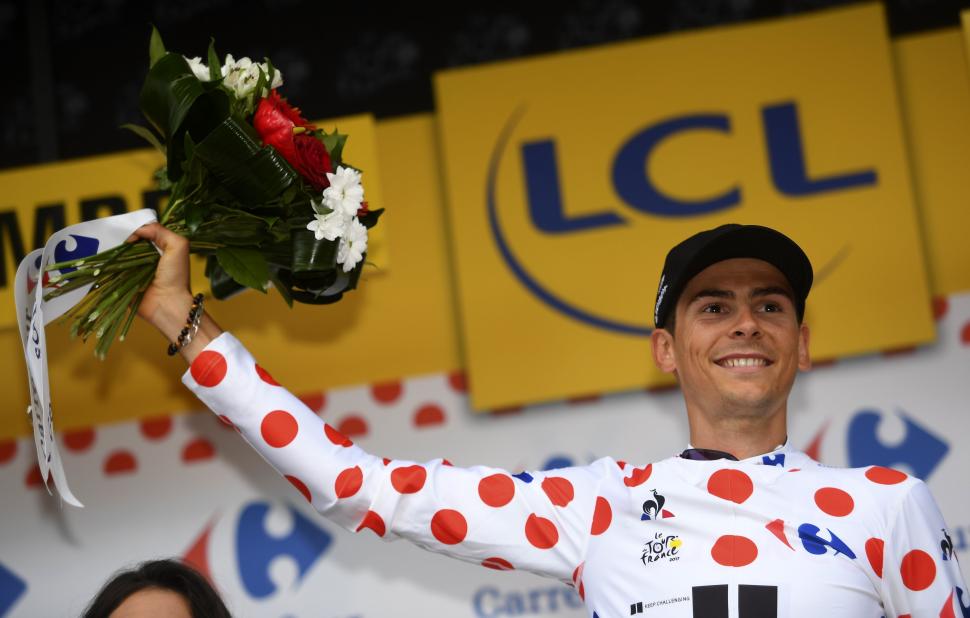
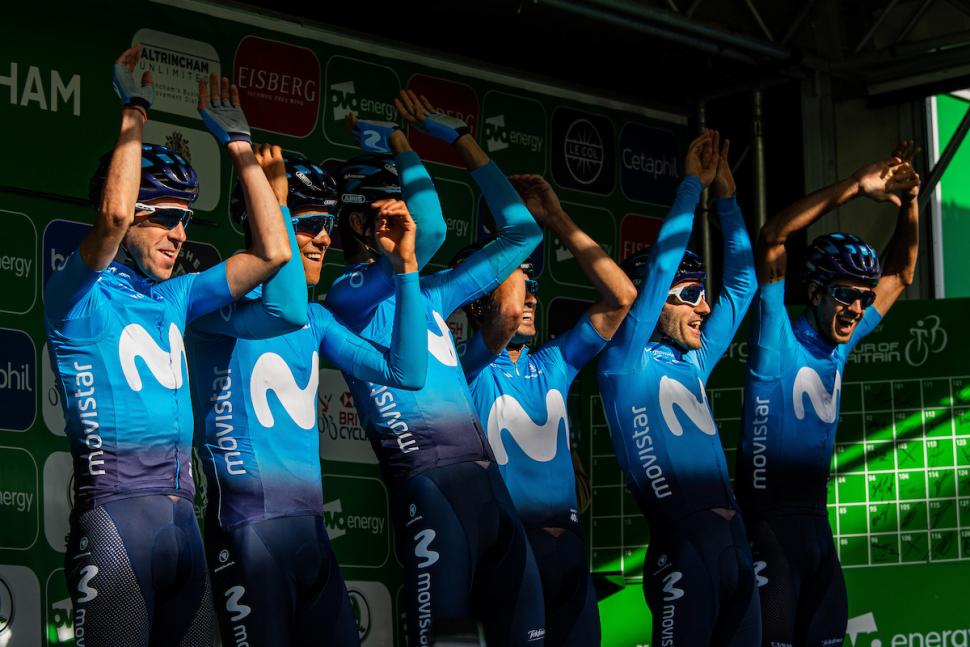
It was only a cyclist, so at least 50% their fault for being on the road in front of a car.
True, fwiw they're half decent round my neck of the woods, but I appreciate having travelled around the UK via train, it ain't always so good...
"Mitigating on behalf of the defendant, and addressing her failure to stop, Foster’s barrister said: “This is a young woman who was in shock by the...
"bikists"?
The tory party will oppose anything that might restrict their tanks rolling at the next election.
I'm sure this (and other 3D printed models) are made where labour costs are cheap also. Nobody is making these in Europe. There's only so much ...
Especially since the similarly priced Tickr X did have that functionality.
CX is brutal in terms of forces acting on the chain. A single, technical kick at 40 RPM by Iserbyt with a small chainwheel might put more load on...
I experience this quite often when out running. I follow the guidelines, running towards traffic and keep hard right. I am very visible too but...
Not enough to warrant having the role exist at all would be my guess.